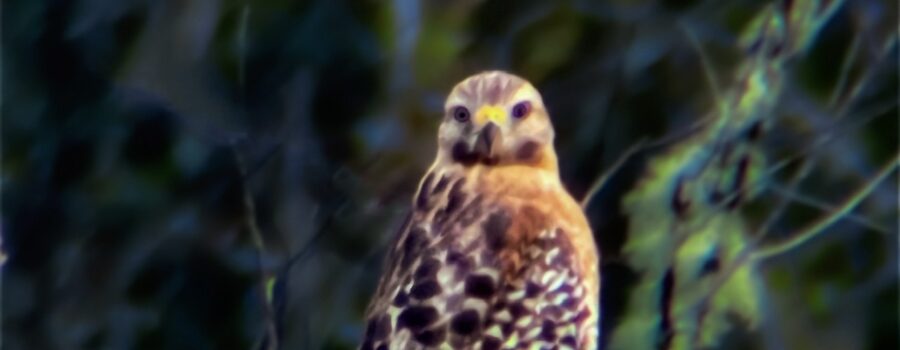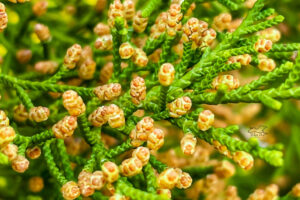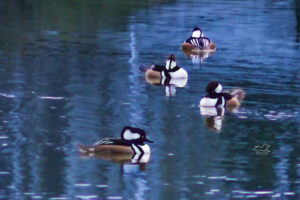Red Shouldered Hawks are Beautiful, Territorial Raptors

Last weekend, on my hike in Gothe State Forest, I discovered a swampy area I had never been to before. When I first saw the area, I was excited for two reasons. Water usually equals wildlife, and also wildflowers that I don’t get to see other places in the woods. And I definitely wasn’t disappointed, either. There were quite a few wildflowers that I hadn’t photographed before, and there were quite a few birds in the surrounding trees. The highlight of the trip, though, was definitely the red shouldered hawk (Buteo lineatus) that was obviously the king of that little swamp. I’ve had another red shoulder living near my house most of the last two years, and spotted it many times, but never been able to get any photos. So finally getting some images of one was awesome. When I first arrived at the swampy spot, the bird was down on the ground, probably with prey, and I frightened it up into the tree that was growing in the water. Had it stayed on the ground, I probably wouldn’t have seen it at all due to the tall grass. I slowly worked my way closer and closer in the underbrush, but at one point it looked directly at me, letting me know it was aware of me. I was sure it would fly off, but it seemed to know it was safe out in the water.

Red shouldered hawks are probably the most common diurnal raptors that we have around here, although we do have several others as well. They tend to live in deciduous forests near swamps, streams, or lakes. They prefer an area with many trees to give them nesting options, but with relatively little underbrush to make hunting easier. The area I live in, is perfect habitat for them. They generally eat small mammals such as mice, voles, squirrels, and rats, but they will sometimes also prey on small snakes, lizards, insects, and smaller birds. They tend to be highly territorial and monogamous with pairs keeping the same territories for years. There are five subspecies, four of which are found in the eastern United States and Mexico while the fifth is found in western California and Oregon. Most are sedentary, but some of the northernmost birds will migrate south in the winter. The species as a whole is now doing well, thanks to protective laws and the outlawing of the pesticide DDT, but for quite some time they were considered endangered or protected. I’m always happy to see these guys around since they help keep the rodent populations down. To finally get photos of one really made my day.






Recent Comments